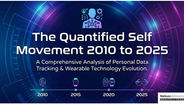Hashtag healthcare : Twitter's new role in Medicine
- Lloyd Price
- Sep 7, 2017
- 4 min read

In the space of a few short years, Twitter has grown from several strands of inconsequential drivel to an information powerhouse. Originally conceived as a way to keep up to date with a small network of friends and family, the micro-blogging model, which sees the rapid exchange of quick-fire information, was soon recognised as an invaluable resource for professional organisations.
An area that has benefited in particular from this format is the healthcare industry, where the output of short bursts of relevant news and developments can mean the difference between life and death. Social media sites such as Twitter now represent the largest source of healthcare discussion in the world. Just as celebrities have found Twitter a useful platform for communicating directly with fans, Tweets cut out the media coverage middleman when it comes to providing accurate news in real time from healthcare professionals. Read on to find out how medical authorities and industry experts are using twitter accounts to change the way healthcare is delivered.
Reaching a wider audience
From Health Secretary Jeremy Hunt, to NHS organisations, hospitals and individual GPs, twitter offers an effective and efficient means of communication. With only 140 characters to work with, even the heavyweights in healthcare still have time to Tweet. Unlike Facebook, where privacy settings dictate the visibility of the status updates, Twitter works on a more open and accessible system. As the length of Tweets are limited, the information is also more likely to be regularly updated. So when a hospital needs to alert staff and patients about problems with a service, there’s a good chance the Tweet will have saved a lot of time and hassle all round.
Direct communication with followers
The Internet has changed the landscape of public opinion and freedom of speech forever. Nowhere is this more apparent than in the stream of Twitter feeds where anyone with an interesting or controversial opinion can suddenly be propelled to Twitter stardom. The healthcare industry can only thrive if the relationship between patient/consumer and provider is nurtured. By receiving direct communication from the people who use their services everyday in the form of criticism, comments and suggestions, the healthcare industry can better understand what areas require improvement.
The power of the hashtag
Twitter takes some aspects of traditional forms of media and combines them with the best practices in social media that encourage cross-network conversation between users. Hashtags help to collect information about a topic and present them for anyone wishing to find opinions about that topic or contribute to the discussion. For users wishing to get involved in conversations about social media in healthcare, a useful hashtag is #HCSM where you can find all the latest news from healthcare innovators such as ‘medical futurist’ Bertalan Mesko.
Emergency Situations
Twitter has been in invaluable resource in emergency situations around the world, such as during the aftermath of typhoon Haiyan in the Philippines. A study by the Red Cross show that people are increasingly using social media as a vital resource for organising relief, helping families and friends find each other and discovering the scale of damage caused.
On the 25th September Twitter announced the launch of a new alert system to help organisations ‘enhance the visibility of critical Tweets.’ Services using the alert system, including the London Fire Brigade, Foreign Office and Environment Agency, can mark an important Tweet with an orange bell. Followers will then receive a text alert in the event of an emergency situation. It is hoped that these Tweets will act as warnings of imminent danger, provide evacuation instructions and information about resources.
Twitter analytics
The scope for reaching meaningful conclusions through analysis of Twitter feeds is immense. Researchers have already learned a lot about the way healthcare information travels through social media and how to successfully track epidemics. Symplur is a company that aims to ‘connect the dots in healthcare social media’. So far Symplur’s big data includes 170 million healthcare Tweets, 3.4 million healthcare Twitter profiles and 1,500 health communities. These analytics may benefit ‘public health organisations, governmental agencies, communication agencies, pharmaceutical companies, healthcare researches and academia.’ One of Symplur’s major undertakings is The Healthcare Hashtag Project, which aims to make finding relevant hashtags easier for the healthcare community and providers.
The most astonishing benefit for healthcare providers is in Twitter’s proven capacity to accurately track and predict outbreaks of disease and epidemics. In the same way that Google has been tracking the spread of influenza through related search terms since 2008, Twitter analysis has shown the same principle can be applied to Tweets. One good example of this is the cholera outbreak that effected Haiti in 2010. Researchers found that analysis of real-time Tweets could have led to early detection of the outbreak, as this information was available up to two weeks earlier than reports from official sources.
In a study conducted at John Hopkins University it was discovered that many people put very revealing health information on their Twitter feeds, such as their symptoms, self-diagnosis, the medication they are using to treat the problem and the effects it is having. The researchers supposed that much of this information is not recorded in any official health record and could provide insights into common health misconceptions that need to be addressed, such as when to use antibiotics.



















































Comments